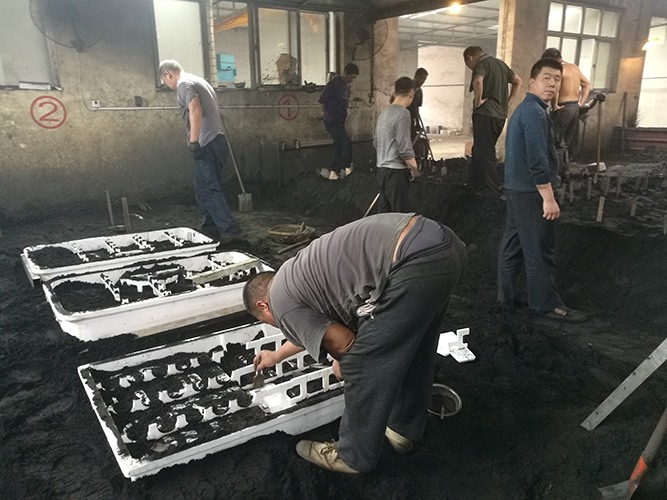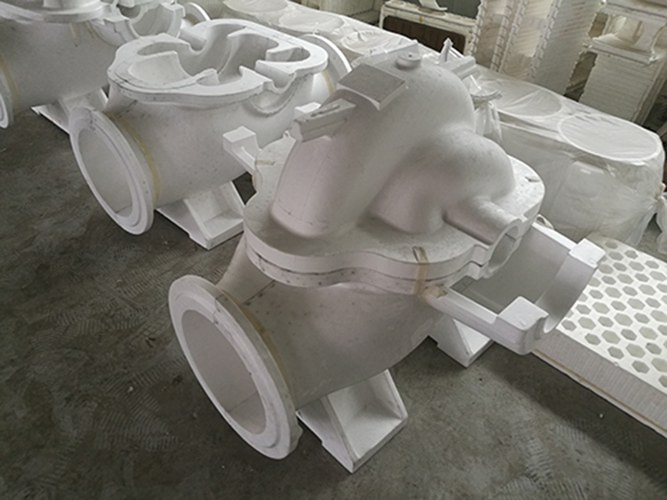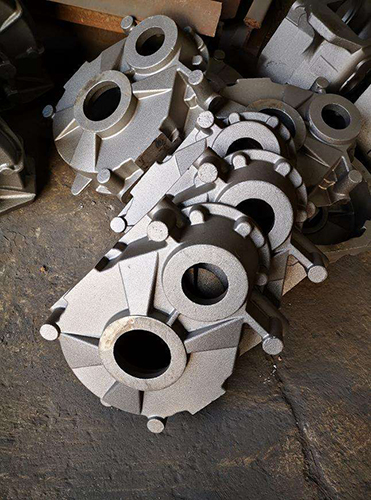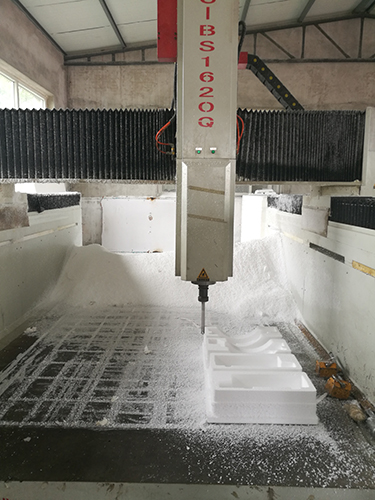+86 311 85258258
+86 311 85258258
Lost foam casting is a type of evaporative pattern casting. This method is quite similar to investment casting which uses wax instead of foam in the pattern making process.
The foam pattern was first used in metalworking in 1958. Although this mold casting technique is not as popular as other methods such as sand mold casting or permanent casting, it maintains outstanding advantages, especially in casting complicated and precise molds.
Unlike traditional methods which include the pattern withdrawn process before casting and require skillfulness in the pattern removal step, with respect to the lost foam method, the pattern is evaporated when the molten metal is poured into helping to reduce these considerations.
Firstly, a pattern is designed from polystyrene foam. This type of foam plays an important role in this casting method. It is a good thermal insulator and chemical resistance, enable working normally at the temperature below 75 oC.
Depending on difficulty and details of the product, the foam pattern can be made from different manners.
For highly detailed casting patterns, the foam pattern is partly made and glued together. For the small volume, foundries often make patterns by hand-cut or machined from a solid foam block. If the pattern is simple enough, a hot wire foam cutter can be applied.
In case the volume is large, the pattern can be mass-produced by a process similar to injection molding.
Polystyrene beads are injected in a pre-heated aluminum mold at low pressure. After that steam is applied leading to polystyrene expands more to fill the empty cavity and then form the pattern or a section. The final pattern is approximately 97.5% air and 2.5% polystyrene.




Once the pattern is formed, it is coated with insulation paint, placed in a flask and surrounded in un-bonded sand and compacted.
The covering paint works to increase the durability of the mold surface, protect from erosion, and broken. Whereas, the flask is designed suitably for this method so that when the molten metal is poured into the mold, the gas generated by foam burning is withdrawn completely.
After molten metal is poured into the foam pattern, the foam pattern is burned out and the casting is formed.
Lost foam casting maintains excellent advantages in comparison with other metal casting methods.
1. It is able to cast very complicated castings.
2. It is advantageous for guaranteeing high precision and smooth surface finish.
3. Casting by the lost foam technique guarantees nearly no errors or defects.
4. Generally, this method is also more economic than investment casting because it involves a few steps. Applying the lost foam process, the foundries can save a lot of labor and production costs.
Except from numerous advantages, there are two main limitations of the lost foam casting technology.
1. Firstly, the pattern costs can be high for low volume applications.
2. Another disadvantage is the patterns are damaged or distorted easily because of its low strength.
Lost foam technique can apply in various materials ranging from alloy steel, carbon steel, alloy cast iron, ferrous alloy to alloy aluminum.
Ignore a few limitations, there are various advantages found in the lost foam method. Because of its precise casting ability, this process is often preferable to cast complicated and detailed products.
It is applied in a variety of industries ranging from the arts, computer technology, agriculture, national defense, automotive, to civil areas.
For many cast products cylinder heads, cylinder blocks, pipe fittings, valves, fire hydrants, motor starters, 3D models, gearbox details and more the lost foam casting process is the perfect match.
High detailed and complex lamp posts, gas burners, fences, pump housing, aluminum castings, pan support, etc. are also often processed by the lost foam casting.
For many years, Zen Young Foundry has been providing customized metal casting services for various industries and project types.
Mining & Engineering Machinery Casting Parts
If you are looking for a solution that fits your custom metal Sand casting project, Zen Young can help you produce perfect metal parts through a reliable casting process. We always welcome special material and difficult parts and would like to help our comstomers utmost.
Zen Young have capabilities to produce Cast iron,Stainless steel,Copper and Aluminum parts from start to finish. Whether you have a design ready for casting, or you need a custom casting design, we can help
We will choose different casting methods for processing according to the product shape, material and your working conditions. Many years of processing experience can guarantee the quality of the casting parts.
We work with our customers to design patterns and molding methods for each custom casting. Original castings or ready-to-use castings can be provided. Secondary finishing operations, including powder coating, are additional options. Contact us with any questions about the casting process and also for more information on how our casting services can meet your project requirements.